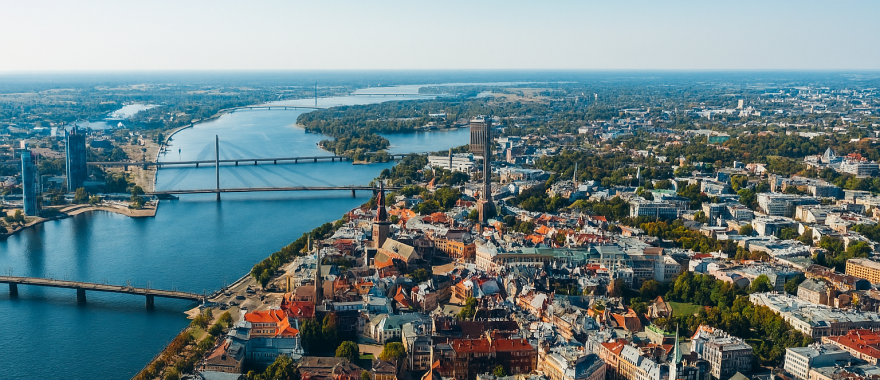
Riga, the vibrant capital city of Latvia, is a dynamic blend of rich history, modern innovation, and youthful energy. As the largest city in the Baltics, Riga is known for its stunning architecture, diverse cultural scene, and a welcoming atmosphere that makes it an ideal destination for students from around the world.
The city’s historic centre – a UNESCO World Heritage Site – is famous for its beautifully preserved Old Town and one of the world’s largest collections of Art Nouveau buildings. Wandering through its charming cobblestone streets, you’ll discover colourful facades, hidden courtyards, and lively cafés that show Riga’s unique character.
Riga is also a green and accessible city. With extensive parks, riverside walkways, and a well-connected public transport system, it’s easy to explore everything the city has to offer. Whether you’re enjoying a quiet afternoon in Kronvalda Park, attending a concert at the magnificent Latvian National Opera, or watching the sunset at the Daugava riverbank, Riga has something for every mood.
Facts About Riga
- Founded in 1201, Riga has over 800 years of history.
- Home to more than 1 million people in its metropolitan area.
- Recognised by UNESCO for its exceptional Art Nouveau architecture.
- One of Europe’s fastest-growing technology hubs, with a thriving startup ecosystem.
Must-Visit Places
- Old Town (Vecrīga)– The heart of the city, full of medieval charm, restaurants, cultural events, and the iconic House of the Blackheads.
- Art Nouveau District– A short walk from the centre, this neighbourhood showcases some of the most impressive architectural masterpieces in Europe.
- Riga Central Market– One of the largest markets in Europe, set inside former Zeppelin hangars, offering local food, fresh produce, and authentic cultural experiences.
- Kalnciema Quarter– Known for its wooden architecture, creative events, artisan fairs, and weekend markets.
- Ķīpsala & Spīķeri Waterfronts– Perfect for evening walks with stunning city views.
- Mežaparks– A vast green area ideal for sports, concerts, and outdoor activities.